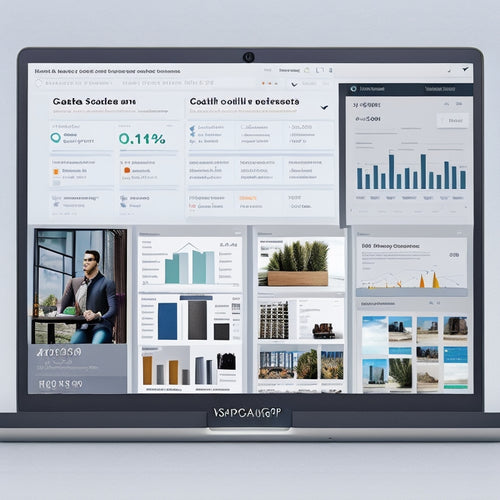
Streamline Shipping: 5 Proven Ecommerce Logistics Fixes
Share
You're likely aware that inefficient shipping logistics are costing your ecommerce business time and money. To turn things around, you need to automate shipping carrier selection, optimize packaging for efficient shipping, and implement accurate weight-based pricing. Additionally, leveraging zone skipping for cost savings and enhancing order tracking and visibility can make a significant impact. By implementing these five proven fixes, you'll be able to streamline your shipping process, reduce costs, and boost customer satisfaction. Now, it's time to dive deeper into the details of each fix and discover exactly how they can revolutionize your ecommerce logistics.
Key Takeaways
• Automate shipping carrier selection with a TMS to improve efficiency and reduce costs.
• Optimize packaging with custom dimensions and eco-friendly solutions to minimize shipping costs and product damage.
• Implement accurate weight-based pricing with a high-quality shipping scale to lower costs and enhance logistics efficiency.
• Leverage zone skipping by shipping directly to regional sorting facilities to reduce transportation costs and transit times.
• Enhance order tracking and visibility with real-time updates and data analytics to boost customer satisfaction and loyalty.
Automate Shipping Carrier Selection
By integrating a transportation management system (TMS) into your ecommerce platform, you can automate shipping carrier selection, ensuring that each package is routed to the most cost-effective and efficient carrier for its specific needs. This automation allows you to improve carrier selection, eliminating the need for manual research and comparisons.
With a TMS, you can streamline automation, reducing the time and effort spent on shipping logistics. The system analyzes factors such as package weight, dimensions, and destination to determine the best carrier for each shipment. This results in cost savings, increased efficiency, and improved customer satisfaction.
By automating carrier selection, you can also reduce errors and exceptions, allowing your team to focus on higher-value tasks. With real-time tracking and analytics, you'll have complete visibility into your shipping operations, enabling data-driven decisions to further optimize your logistics.
Optimize Packaging for Efficient Shipping
To minimize shipping costs and maximize efficiency, you need to optimize your packaging strategy, ensuring that each parcel is carefully sized and filled to reduce empty space and unnecessary weight. This means adopting eco-friendly packaging solutions that not only reduce waste but also minimize dimensional burden. By using custom dimensions, you can create boxes that fit your products perfectly, eliminating unnecessary voids and excess material. This approach also helps reduce the risk of product damage during transit.
When optimizing your packaging, consider the type of products you're shipping and the materials needed to protect them. For example, if you're shipping fragile items, you may need to use additional cushioning materials or reinforced boxes. On the other hand, if you're shipping lightweight items, you may be able to use smaller, lighter boxes.
Implement Accurate Weight-Based Pricing
You can greatly lower shipping costs and enhance logistics efficiency by implementing accurate weight-based pricing, which involves calculating the precise weight of each parcel to determine the most cost-effective shipping option. This approach ensures you're not overpaying for shipping due to inaccurate weight estimates.
By leveraging weight accuracy, you can achieve pricing efficiency and optimize your shipping strategy.
To implement weight-based pricing, you'll need to invest in a high-quality shipping scale that can provide precise weight measurements. This investment will pay off in the long run, as you'll be able to negotiate better rates with carriers and reduce shipping costs.
Additionally, accurate weight measurements enable you to identify opportunities to reduce packaging weight, further decreasing shipping costs. By prioritizing weight accuracy, you can make data-driven decisions that drive logistics efficiency and boost your bottom line.
Leverage Zone Skipping for Cost Savings
Zone skipping is a strategy that involves bypassing traditional hub-and-spoke shipping models. It can reduce transportation costs and transit times by allowing you to ship directly to regional sorting facilities. By doing so, you can eliminate the need for multiple handling and sorting stops, resulting in faster delivery times.
This approach can be particularly beneficial for ecommerce businesses with high-volume shipping needs. It enables you to reduce transit time and improve delivery reliability. To implement zone skipping effectively, you'll need to analyze your shipping data to identify opportunities for direct-to-facility shipping.
This may involve partnering with regional carriers or third-party logistics providers that have existing relationships with these facilities. By doing so, you can negotiate better rates and improve your overall shipping efficiency. Additionally, zone skipping can help you reduce the risk of lost or damaged packages, as there are fewer touchpoints during transit.
Enhance Order Tracking and Visibility
By streamlining your shipping operations through zone skipping, you're now better positioned to focus on enhancing order tracking and visibility, which can further boost customer satisfaction and loyalty by providing real-time updates and accurate delivery estimates.
To take your order tracking and visibility to the next level, consider implementing the following strategies:
-
Automate customer notifications: Set up a system that sends automated updates to customers via email or SMS, keeping them informed about their order status and expected delivery times.
-
Integrate with carriers for real-time updates: Partner with carriers that provide real-time tracking information, enabling you to provide customers with accurate and up-to-date information about their orders.
-
Use data analytics to optimize logistics: Leverage data analytics to identify areas of improvement in your logistics operations, making adjustments to reduce delays and increase efficiency.
Frequently Asked Questions
Can I Use My Existing Shipping Carrier Accounts With a New Logistics System?
You can definitely use your existing shipping carrier accounts with a new logistics system, as most systems offer carrier compatibility and seamless account integration, making it easy to switch your existing accounts and operations.
How Do I Handle Shipping Irregularly Shaped or Oversized Products?
When shipping irregularly shaped or oversized products, you'll need to contemplate custom packaging solutions and accurately calculate dimensional weight to avoid carrier penalties, ensuring a seamless and cost-effective logistics operation.
What if My Products Have Varying Weights and Dimensions Within a Single Order?
Did you know that 71% of shoppers cite shipping costs as a reason for cart abandonment? When handling orders with varying weights and dimensions, you'll need to master weight calculations and dimensional pricing to guarantee accurate shipping quotes and avoid profit-killing errors.
Can I Integrate My Logistics System With My Existing Ecommerce Platform?
You'll face integration challenges and compatibility issues when linking your logistics system to your ecommerce platform, but a seamless integration will bring efficiency benefits, automating tasks and streamlining your entire shipping process.
How Do I Handle Shipping to International Destinations With Different Regulations?
Sailing through international shipping is like maneuvering a treacherous ocean, but you're the captain. You'll need to chart a course through customs compliance and shipping restrictions, ensuring you're aware of each destination's unique regulations to avoid costly mistakes.
Related Posts
-
The Impact of Video Shopping on E-commerce Sales
In the ever-evolving world of e-commerce, new technologies and strategies emerge to enhance the shopping experience ...
-

How Do I Optimize My Shopify Store for Sales
This article aims to provide an informative and analytical overview of the process of optimizing a Shopify store for...
-

Analytics Shopify Apps Provide Merchants With Vital Insights Into Store Performance and Sales Metrics
This article examines the significance of analytics Shopify apps in providing merchants with essential insights into...

